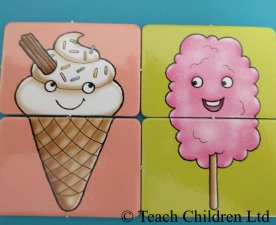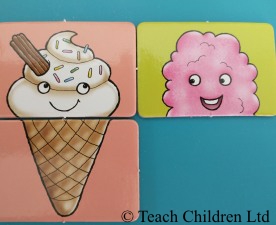Games to improve handwriting
We have incorporated the gross and fine motor skills needed for handwriting in to the 5 types of play children need to experience.
These types of play are roughly based on the developmental opportunities they provide, especially if they are child driven rather than adult led.
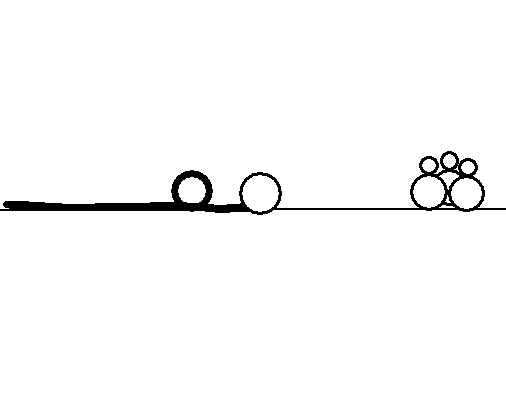
Physical play
Active exercise (running, jumping, skipping etc..), rough & tumble and fine motor skills activities to develop whole body and hand and eye coordination strength and endurance. The outdoor element of such play develops independence, resourcefulness and self-regulation while the fine motor skills activities support the development of concentration and perseverance.
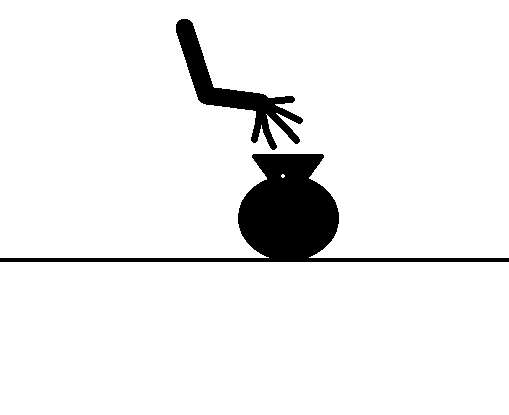
Play with objects
Starts as soon as a child can grasp and hold an object; mouthing, biting, turning, stroking, hitting and dropping. It's how we all learn through the exploration of our senses (sensory-motor play). This type of play develops our abilities to; physically manipulate items, think, reason and problem solve, to set challenges and goals as well as to monitor our own progress.
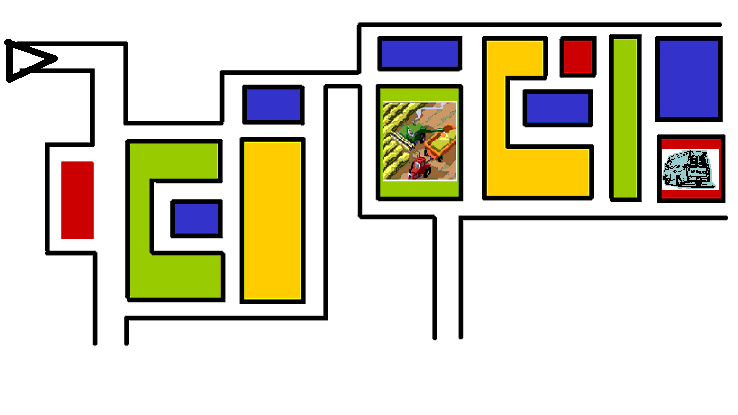
Symbolic play
Refers to the development of spoken language, visual symbols such as letters and numbers, music, painting, drawing and other media used for communication of thought and ideas. This type of play allows children to develop the abilities to express and reflect on experiences, ideas and emotions. Sound and language play develops phonological awareness required for literacy, while number play that relates to real life situations supports numerical skills.

Pretence / socio-dramatic play
Pretend play provides the opportunity to develop cognitive, social, self-regulatory and academic skills. This kind of play means children have to learn and pick up on unspoken rules of interaction, taking on the role of a character and playing within the expected confines of that role.
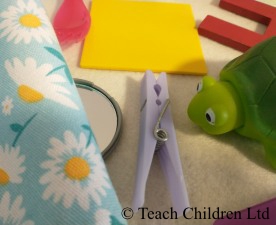
Games with rules
Physical games such as chase, hide & seek, sport, board and computer games. Develop social skills and the emotional skills of taking turns, winning and losing as well as other people’s perspectives.
Physical play

Tummy skittles
You need
A large/medium sized ball, skittles or empty 1 litre or 2 litre plastic drinks bottles and space enough for your child to lay flat on their tummy and the skittles to be about 2 metres away.
How to do it
Get the child to lie on their stomach, lift their head up and then lift their arms above their head. Throw the ball at the skittles, then lower the body gently back to the floor, ready to throw again.
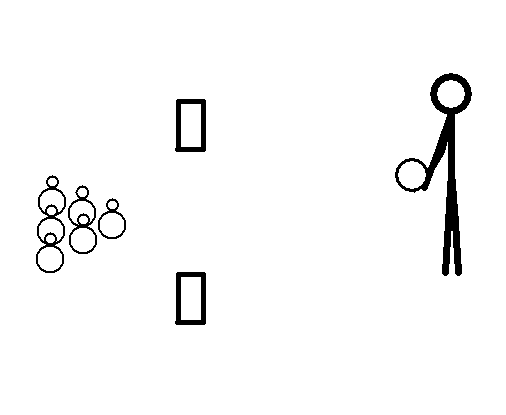
Goal post skittles
You need
Posts/marker, large plastic drink bottles/skittles and a range of ball sizes.
How to do itPlace the posts about 2 metres away from the start position and about half a metre apart. Place the skittles about half a metre behind the posts but directly between them. The child starts by rolling a large ball through the posts to knock the skittles over. Before they roll the ball explain to get a maximum score they need to knock all the skittles over in one roll and that the best way to do this is to look directly ahead through the posts at the skittles, NOT at the ball or their hand.
It may take a little practise, as they improve they can use a different size ball or move the skittles so that they form different patterns which means they have to be more accurate with the roll.
This game can also be used as a foot and eye activity, the same rules apply, they must look to where they want the ball to end up not at their feet or the ball, tricky!
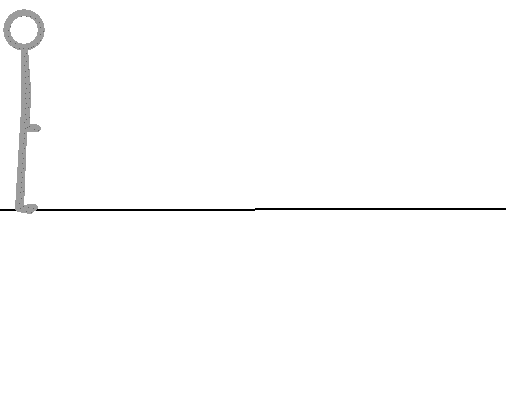
Marching
You need
Space, chalk or a marker of some kind if you are going to create a maze line.
How to do it
Marching can be turned into games or used as a timed exercise for older children. When marching the opposite arm should swing forward to the raised knee, so left arm and right knee together.
Marching Songs - Such as ‘The Grand Old Duke of York’ and others.
Maze Lines - Draw a mixture of straight and curved lines with chalk and ask the child to march along the line. Slowly at first so that they focus on marching skills and then this can be turned into a time trial, setting rules about how high the knees have to be raised in the march.
Sergeant Major - Marching on the spot with you giving orders. Low march (knees raised slightly), normal march (knees raised to about 90 degrees) and high march (knees raised as high as possible), left turn, right turn, about turn and face forward. For older children terms such as turn anti-clockwise and clockwise, quarter turn, half turn, turn 45 degrees or 90 degrees could be introduced. You could even use the points of the compass.
Play with objects

Feely bag games
You need
Non see through bag, selection of toys and pictures, or second set of toys being used.
How to do it
Before you start the game let the child feel the objects you are going to use. Talk together about them.
Put one set of the toys (e.g. shapes) in the bag and place the other set on the table for the child to look at. Before you start make sure the child knows the basic properties of the toys they will be looking for. The child should use both hands to manipulate the toy.
Handbag Hunt Level One
In this activity, the child puts their hands in (both hands if possible, but if not, then use the dominant hand), picks up an object, feels it, identifies it and pulls it out to check only AFTER identifying it. If correct, the child gets to “keep” it, if wrong, you get to "keep" it. The winner is the one with the most animals/shapes at the end.
Handbag Hunt Level Two
Ask the child to find a specific object. This is usually harder as it involves the child identifying and discarding possibilities before deciding on the one that feels right.

Imprint
You need
Play dough, plasticine or clay, cookie/pastry cutters or imprint tools.
How to do it
Using tools such as cookie cutters talk through and show the child how the cutters work when you only use a small amount of pressure (it does not cut through the play dough, just leaves a mark). As you use a greater amount of pressure discuss how far the cutter goes through the dough and how the cutter feels against your hand/finger. Ask the child to do the same thing and help them to talk through the experience making them more aware of how the tools feel in their hand and fingers and what the rest of the body is doing to help them mark or cut through the play dough. Talk through how the cutter makes shallow cuts when pressed gently and deeper cuts when pressed hard and that they will cut all the way through if the right amount of pressure is used.
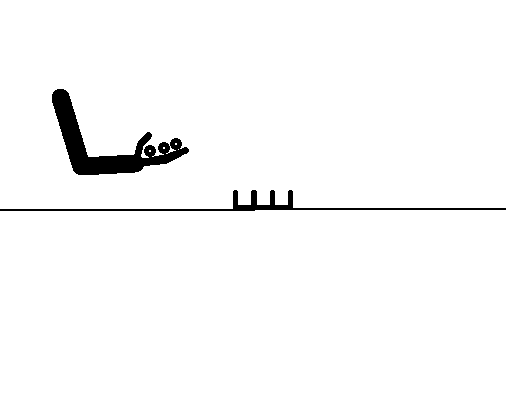
Egg Box Share
You need
The bottom section of an egg box and dried beans / peas or beads.
How to do it
Using the egg box as the catching container ask the child to hold a number of small dried beans in the palm of one hand. Then ask them to place one bean at a time into each of the cups of the egg box. They will need to have their palm and curled fingers facing upwards. Then use their thumb to help roll each bean up from the palm of the hand to drop into each egg cup.
Start off using a 6 space egg box and 1 bean per egg space, so they hold 6 beans at the start. Gradually get them to hold more in their hands and see how many they can place in the holders. This can be played as a time or number challenge, ‘how many beans can they place in one minute’ or ’how many beans can they hold and place in the holders without dropping any’. Remember it is important to do one bean at a time!
Symbolic play

Model village
You need
Toys you can use to make a location or maze. For older children you could use maps.
How to do it
Try to use items and themes that the child enjoys playing with.
Using the language for placement and direction, talk through how you are moving the toy. Then either give instructions or ask the child to give you instructions on how to get to a location in the game.
Only give one instruction at a time where possible and increase the number of instructions as their ability and confidence grows.
The language that can be developed through this kind of play is; in front, next to, behind, on the left of, on the right of, on top of, under the, underneath, stand beside, inside, outside, over the top, around, turn left, turn right, straight on, backwards, forwards, reverse and opposite.

Pattern making
You need
Beads, building blocks, lego or shapes.
How to do it
Talk through the process of making the same pattern as shown on a card or already produced; for instance, the red square goes on the right of the blue square and the yellow square is below the blue square. Ask your child to verbalise what they see and are doing to recreate the pattern. Patterns can be created and copied with all sorts of items - beads, building blocks, lego, and shapes. As skill levels improve tessellation (a pattern of shapes that fit perfectly together) activities and square or patterned paper for colouring and creating their own pattern designs are enjoyable.
Completion Games & Activities
You need
Two copies of a picture, shape or pattern with one complete and one incomplete.
How to do it
Show your child a completed simple picture, shape or pattern, cover it and give them an incomplete version of the same picture, shape or pattern to complete. Then compare with the original and talk through any differences. Make the activity appropriate to their ability, too simple they will be insulted, too hard and they will feel frustrated.
Pretence/socio-dramatic play

Shops - Role play
You need
Create your own shop, ice-cream parlour or car sales room at home.
Use pretend food and packets if you have them or pick a few from your kitchen cupboards (appropriate for young children to play with). Toy cars and other vehicles can be a great alternative to a grocery shop.
How to do it
Get your child to take the lead in the role play. They can either be the shop keeper or the customer.
For older children you can add shopping lists and money to the role play.

Kitchen - Role play
You need
Again, you do not need anything fancy - plastic bowels, wooden or plastic spoons etc...
How to do it
Get your child to pretend to make cakes and other delights for you. Try providing paper and writing tools (age appropriate sizes) so they can make their own shopping lists.
This can then run into real life activities such as helping you bake or cook.

Cafe - Role play
You need
You just need - plastic bowels, wooden or plastic spoons etc… Try providing paper and writing tools (age appropriate sizes) so they can take your order.
How to do it
Again, as well as getting them to pretend to make cakes and other delight for you in the café you can introduce the idea of having a menu, adding prices and using money.
Games with rules

Kim's games
You need
A tea towel and 10 items of different color, shape, size and a timer.
How to do it
Place a few familiar objects under a cloth, remove the cloth so that your child can see them and study them (talk through what they are and maybe what is next to what). After about a minute cover them with the cloth; how many can they remember, can they remember colours or position. Then show them the objects again and talk through what they remembered. You could move the objects around and play again or remove an object to see if they can work out which one is missing.
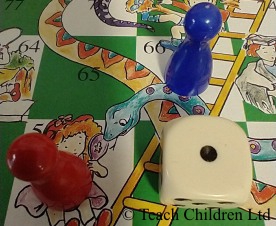
Board games
You need
Any kind of board game.
How to do it
You need to play the game following the rules. Your child needs to learn to wait their turn and follow the rules even if it means they are going to lose.
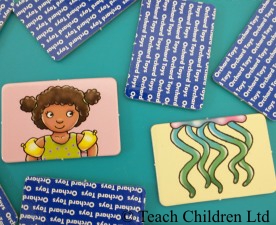
Picture and word games
You need
Packs of flash cards that have matching pairs.
How to do it
The cards are placed face down and you turn a card over, look at it, then place it back face down again in the same spot and try to find its matching pair by turning another card. If you do not find the matching pair it is someone else’s go. The idea is to remember where the cards are, so you can make a matching pair, the winner is the one with the most pairs of cards.


